Chicka Chicka Boom Boom
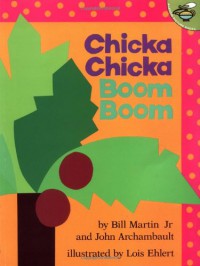
This cute book is a classic! It helps teach students the alphabet. The Lexile level is AD 530L. I would use this in a kindergarten classroom. We would read the book aloud and do an activity with the letters in each student's name. We would make palm trees out of construction paper and I would give them a flash card that said "Chicka Chicka Boom Boom! Will there be enough room? _____ has ___ letters in their name!" The first blank would be the child's name and the second blank would be how many letters are in their name. We could then get out magnetic cookie sheets and spell out each child's name on that as well.
 1
1
How the Grinch Stole Christmas

I love this book and movie! It definitely gets everyone in the holiday spirit so I would use it around the Christmas season. The Lexile level is 510L. I would use this in a 2nd or 3rd grade classroom. I would first read the book aloud to the class so that they know the story. Then we would sing the song together while they all have copies of the lyrics. Then we would go through the lyrics and find the similes and metaphors and write them on a T chart. There are so many fun things to do with How the Grinch Stole Christmas!
 1
1
Pete the Cat: Rocking in My School Shoes
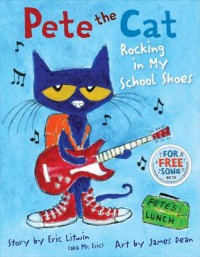
This precious book is one of an adorable series: Pete the Cat! This particular book is about Pete's first day of school as he discovers new places like the lunchroom, library, etc. The Lexile level is AD600L. I would use this in a kindergarten or 1st grade classroom. I would read the book first and there's even a song that goes with it, so we would sing that. I would then give each child a picture of the cafeteria, school bus, classroom, library, school, and playground and have them retell the story by putting the events in order. We could then take a walking tour of the school and as we stop by each place that Pete went, ask the students "Are you worried?" and have them say "Goodness NO!"
If You Take A Mouse To School

This cute book is about a sequence of events that start off with If you take a mouse to school! The Lexile level is AD190L. I would use this in a 2nd grade classroom and do a sequence of events with the events the happen in the story. Depending on how many students I have and how many events there are, I could pair the students up and give them each an event and then as a class, we could sequence them by putting them on the board. We could also talk about cause and effect relationships.
A Bad Case of Stripes

This funny story is about a young girl named Camilla, a lover of lima beans and a worrier about others' opinions of her. On the first day of school, Camilla wakes up to find herself covered in stripes. The Lexile level is AD540L. I would use this in a 2nd grade classroom and read it aloud. I would have a T chart on the board that everyone could see and it would be divided into two categories: Internal Traits and External Traits. As we read the book, we would stop to add to each category. At the end, we would talk about which category is more important and how having beautiful internal traits is more important than having beautiful external traits.
Sarah, Plain and Tall
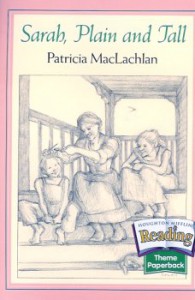
I read this book in 5th grade and loved it! Set in the Midwestern United States during the late 19th century, Jacob Witting, a widowed farmer who is still saddened by the death of his wife during childbirth several years earlier, finds that taking care of his farm and two children, Anna and Caleb, is too difficult to handle alone. He writes an ad in the newspaper for a bride. Sarah Wheaton, from Maine, answers his ad and travels out to become his wife. The Lexile level is 560L. I would use this in a 4th or 5th grade classroom. I would use this in writing centers and have students write a letter to Sarah from the point of view from Anna and Caleb. Since Sarah, Plain and Tall is so descriptive of nature, another writing activity is to have the students paint a verbal picture of an object or place in nature, using carefully chosen adjectives, especially color and texture words. Students can then read their writings aloud to partners, and partners will attempt to draw the objects or places based on the author's carefully chosen words. This lesson focuses on word choice and sentence fluency.
Shiloh

This book is about a sweet friendship between a young boy and a dog he finds mistreated. He vows to work for a man, Judd, to be able to keep the dog, Shiloh. The Lexile level is 890L. I would use this in a 4th or 5th grade classroom. I would first do a Venn Diagram to compare and contrast Marty (the protagonist) to Judd (the antagonist). Then we would hold a mock trial where Judd is on the defense for animal cruelty. The students will develop roles and create questions for the prosecution and defense. The mock trial would be better for a 5th or 6th grade classroom.
Bridge to Terabithia

This sweet book is about a friendship between an elementary aged boy and girl. Their imagination runs wild throughout the book and they create a "kingdom." The Lexile level is 810L. I would use this in a 5th grade classroom when we were talking about foreshadowing. The class would be divided into two groups and I would put a giant tic tac toe chart on the board. I would read passages from the book and the teams must identify whether the passage is foreshadowing or a flashback. If they are correct, they can place an “o” or an “x” on the board. The game continues until one of them wins tic-tac-toe.
The Paper Bag Princess
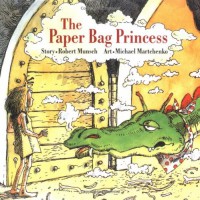
This precious book is about a princess named Elizabeth. This is a change from ordinary fairy tales because Princess Elizabeth has to save Prince Ronald instead of the other way around. The Lexile level is AD740L. I would use this in a 2nd grade classroom when I would be teaching about summarizing stories. I would read the book to the class and then give them each a paper bag. They would be instructed to decorate their paper bag as a princess or a prince. They will be given a flash card to put as the stomach of their paper bag royalty and they will put their summary of the story on this flash card!
The Rainbow Fish
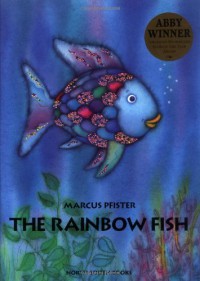
This book is about a fish who learns about friendship and sharing. The Lexile level is AD410L. I would use this in a Kindergarten or 1st grade class at the beginning of the school year. We would read it as a class together and then I would give each student a fish to decorate anyway they want to. I would have a bullentin board that reads "We may all be different but in this class, we swim together!" I would put all the students' fish around the saying, teaching them about how diversity is a good thing.
The Giving Tree

This sweet book is about a little boy who complains about needing certain items his whole life and the tree giving what she has to provide for the little boy. The Lexile level is 530L. I would use this with a 3rd grade class (maybe near Thanksgiving) and give the students cutouts of leaves. I will assign each student another student and they must write three positive compliments on their 3 leaves. We will build a construction paper tree on a bulletin board and have each child represent a branch. Then we will hang up their compliments by their name!
Anne of Green Gables
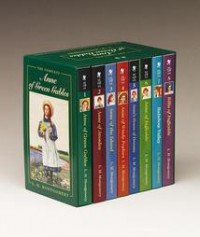
Another of my favorites! (I love history) The Lexile level is HL710L. Since this series is set in the early 1900's and quilts were becoming popular, I would do a story quilt with a 3rd grade classroom. Students will illustrate their favorite part of the story, add captions, and glue their square onto a poster board that we will all use for the quilt. We will punch holes in the poster to string yarn through it to create the rest of the quilt.
Little House on the Prairie

Another one of my favorite series! This series is set in the American Western Pioneer days and observes the life of the Ingalls family. The Lexile level is 600L. I would use this in a 4th or 5th grade classroom. I would start off by discussing what the Homestead Act is and what pioneers needed to start a new life. I would have students brainstorm what they needed to settle, what problems they might have faced, and how the Indians came into play. I would then ask them to compare their houses to our houses today. We would read aloud several chapters from the books that describe their conditions and houses. (I would look these up before the lesson) We would use a KWL chart to see what we knew, what we wanted to know, and what we learned.
The Very Hungry Caterpillar
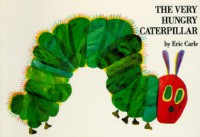
This book goes through the phases of what a caterpillar eats when he wakes up. The Lexile level is AD460L. I would use this book in a kindergarten classroom. I would give each child a piece of yarn with cut out shapes of the food that appears in this story. For example, an apple, pear, plum, strawberry, orange, piece of chocolate cake, ice cream cone, pickle, Swiss cheese, salami, lollipop, piece of cherry pie, sausage link, cupcake, watermelon all appear in this story. I would use all or choose a few. Students will cut, color, and punch a hole in each shape. I would then read the story aloud and the students are to sequence the story by putting the food on the string as they appear in the story. The second time I read aloud, they are to put the food on the string in order AFTER I read the story.
Matilda
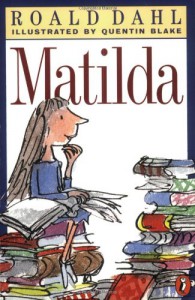
Matilda is one of Ronald Dahl's most popular books and one of my favorites! The Lexile level is 840L. In this first chapter, Dahl writes "The books transported her into new worlds and introduced her to amazing people who lived exciting lives. She went on olden-day sailing ships with
Joseph Conrad. She went to Africa with Ernest Hemingway and to India with Rudyard Kipling. She traveled all over the world while sitting in her little room in an English village." I would read this aloud to my students, show them a map, and point out the continents on the map. I would divide my students into 7 groups and assign them a different continent. Each group finds a book set in their continent and reads it together. They are then instructed to write a book review, answering questions like "How can you tell the story is set here?" and "What is the best part of this story?" I would use this in a 4th grade classroom.
Diary of a Wimpy Kid
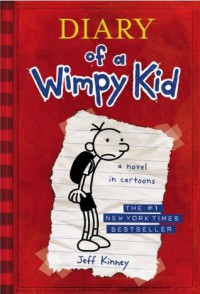
This a popular series within the 3rd to 5th grade range right now. The Lexile level is 950L. I would use this at the beginning of the year or even the first day of school. Greg Heffley learns in the Wimpy Kid books that starting a new school year can be hard. I would give the children ten prompts. For example, My number one goal for this school year is....and The subject I want to improve in the most is....This goal setting lesson gives students something to strive for and something to work at for the rest of the year. I could even do this activity at the beginning of January to refresh their minds of their goals.





